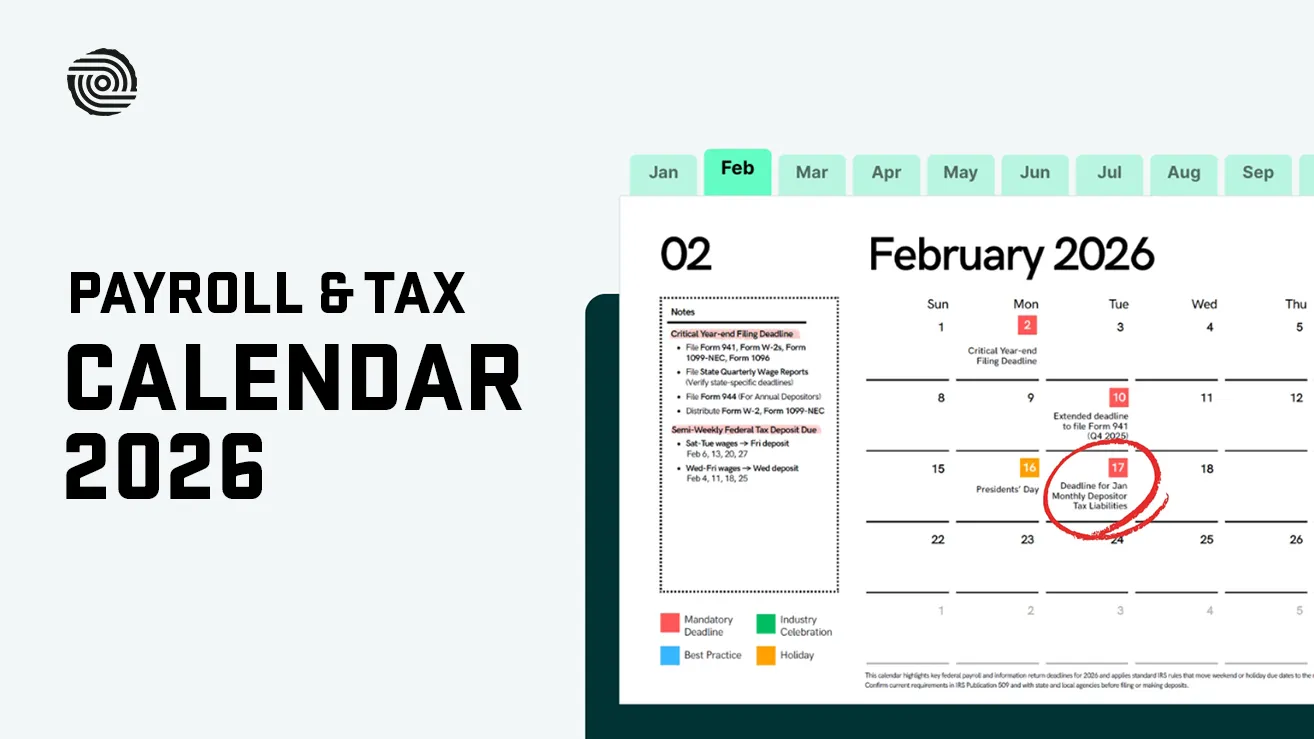Navigating Collective Bargaining Agreements in Construction


Construction projects across the United States often operate under the framework of collective bargaining agreements CBA, which serve as the foundation for labor relations between contractors and unionized workers. Understanding these agreements is crucial for construction professionals, project managers, and contractors who want to successfully navigate unionized job sites while maintaining compliance and fostering positive working relationships.
A collective bargaining agreement represents more than just a contract—it's a comprehensive framework that governs wages, working conditions, benefits, and dispute resolution procedures for construction workers. In an industry where skilled labor shortages and complex project requirements are common challenges, these agreements play a vital role in ensuring projects are completed efficiently while protecting worker rights and maintaining industry standards.
This blog provides construction professionals with essential knowledge about collective bargaining agreements, their components, compliance requirements, and practical implications for project management. Whether you're a seasoned contractor or new to unionized construction work, understanding these agreements will help you make informed decisions and avoid costly mistakes.
What Is a Collective Bargaining Agreement in Construction?
At its core, collective bargaining is the process by which representatives of workers (typically labor unions) negotiate with employers to establish the terms and conditions of employment. The resulting collective bargaining agreement is a legally binding contract that governs the relationship between unionized construction workers and their employers.
In the construction industry, these agreements are typically negotiated between building trades unions, such as the International Brotherhood of Electrical Workers (IBEW), the United Association of Plumbers and Pipefitters (UA), or the International Union of Operating Engineers (IUOE), and contractor associations or individual employers.
The negotiation process involves union representatives advocating for worker interests while employers seek to balance labor costs with operational needs.
Construction CBAs differ from those in other industries due to the project-based nature of construction work. Unlike manufacturing or service industries, where workers may have long-term employment with a single employer, construction workers often move between different contractors and job sites. This mobility requires agreements that are portable and standardized across multiple employers within a geographic region or trade jurisdiction.
The scope of a construction collective bargaining agreement typically covers all workers performing specific types of work within defined geographic boundaries. For example, an electrical workers' CBA might apply to all electricians working on commercial construction projects within a metropolitan area, regardless of which electrical contractor employs them.
What Rights Do Workers Get From a Collective Bargaining Agreement?

Construction workers covered by a collective bargaining agreement receive numerous rights and protections that extend far beyond basic employment terms. These agreements establish a framework that protects workers while ensuring consistent standards across construction projects.
Wage Protection and Standardization: Workers gain the right to predetermined wage scales that often exceed prevailing wage requirements. These scales typically include different rates for apprentices, journeymen, and specialized positions, ensuring fair compensation based on skill level and experience. Many agreements also include automatic wage increases tied to contract duration or cost-of-living adjustments.
Comprehensive Benefits Packages: CBAs typically provide robust benefits packages including health insurance, pension contributions, and training fund allocations. These benefits are often portable, meaning workers maintain coverage even when moving between different union contractors. This portability is particularly valuable in the construction industry, where employment relationships are often temporary or project-specific.
Job Security and Fair Treatment: Although construction work is inherently project-based, CBAs offer important protections for job security. These may include provisions for work allocation, layoff procedures, and recall rights when new projects begin. Workers also gain protection against arbitrary discipline or termination through established grievance procedures.
Safe Working Conditions: Construction CBAs typically include comprehensive safety provisions that go beyond basic OSHA requirements. These may specify additional safety training, equipment requirements, and procedures for addressing unsafe working conditions. Workers gain the right to refuse unsafe work without fear of retaliation.
Professional Development Opportunities: Many agreements include provisions for ongoing training and apprenticeship programs, ensuring workers can advance their skills and career prospects. These programs are often funded through employer contributions to joint labor-management training funds.
Components of Collective Bargaining Agreements

Understanding the key components of a collective bargaining agreement is essential for construction professionals who need to interpret and comply with these complex documents.
Wage Scales and Compensation Structure: The wage section typically includes detailed pay scales for different classifications of workers, overtime rates, and premium pay for specialized work or difficult conditions. Many agreements include geographic differentials to account for varying costs of living within the union's jurisdiction. Shift differentials, hazard pay, and travel allowances are also commonly addressed.
Working Hours and Scheduling: CBAs establish standard working hours, overtime thresholds, and break periods. In construction, these provisions often address unique scheduling challenges such as weather delays, seasonal work patterns, and the need for extended hours to meet project deadlines. Some agreements include provisions for flexible scheduling or compressed work weeks.
Fringe Benefits and Contributions: This section outlines the employer's contributions to various benefit funds, including health and welfare plans, pension funds, training programs, and vacation funds. Contribution rates are typically expressed as hourly amounts paid in addition to wages. Joint labor-management trustees often handle the administration of these funds.
Work Rules and Job Classifications: CBAs include detailed work rules that define job classifications, work assignments, and jurisdictional boundaries between different trades. These provisions help prevent disputes over which workers can perform specific tasks and ensure that work is allocated appropriately among different craft workers.
Dispute Resolution Procedures: Most agreements include multi-step grievance procedures for resolving disputes between workers and employers. These typically progress from informal discussions to formal grievances and may culminate in binding arbitration. Having clear dispute resolution procedures helps maintain productivity while ensuring fair treatment of all parties.\
Union Security and Membership: Many CBAs include provisions regarding union membership requirements, dues collection, and the rights of union representatives on job sites. These provisions must comply with applicable state and federal laws, including right-to-work legislation where applicable.
An Example of a Collective Bargaining Agreement

To illustrate how these components work together, consider this collective bargaining agreement example from a hypothetical regional electrical workers' agreement:
Simplified Construction Electrical Workers CBA Example
Wage Scale (effective 2024):
- Apprentice (1st year): $18.50/hour
- Apprentice (4th year): $28.75/hour
- Journeyman Electrician: $38.50/hour
- Foreman: $41.50/hour
Working Hours:
- Standard work week: Monday-Friday, 8:00 AM to 4:30 PM
- Overtime: Time and one-half after 8 hours per day or 40 hours per week
- Double time: Sundays and holidays
Fringe Benefits (per hour worked):
- Health and Welfare Fund: $8.25
- Pension Fund: $6.50
- Training Fund: $0.75
- Working Dues: 3% of gross wages
Safety Provisions:
- 10-hour OSHA training required for all workers
- The employer provides hard hats, safety glasses, and first aid kits
- Workers may refuse unsafe work without penalty
Work Rules:
- Bargaining unit members must perform all electrical work on covered projects
- Foreman is required for crews of five or more electricians
- Tool allowance: $500 annually for journeymen
This example illustrates how a CBA integrates various components into a comprehensive framework that governs the employment relationship. Real agreements are typically much more detailed and may span dozens of pages, covering additional topics such as apprenticeship standards, jurisdictional agreements, and specific project requirements.
Importance of Compliance with Collective Bargaining Agreements

Compliance with collective bargaining agreement terms is not merely a legal obligation—it's a critical business practice that affects project success, cost control, and long-term relationships within the construction industry.
Legal and Financial Consequences: Violations of CBA terms can result in significant financial penalties, including back pay for wage violations, liquidated damages, and legal fees. Labor disputes arising from non-compliance can lead to work stoppages, project delays, and damaged relationships with unions and workers. In some cases, repeated violations may result in contractors being barred from future union projects.
Project Risk Management: Non-compliance creates substantial project risks that extend beyond immediate financial costs. Work stoppages or slowdowns resulting from labor disputes can cascade through project schedules, affecting other trades and potentially triggering delay claims from project owners. Maintaining good labor relations through CBA compliance helps ensure the smooth execution of projects.
Competitive Advantages: Contractors who consistently comply with CBA requirements often find themselves preferred partners for union projects. This reputation for reliability can lead to better bidding opportunities and stronger relationships with project owners who value predictable labor relations. Additionally, compliance helps ensure access to skilled union workers who may be essential for complex or specialized construction work.
Best Practices for Compliance: An Effective CBA compliance necessitates proactive management and well-defined procedures. Contractors should designate specific personnel to monitor the terms of the agreement and ensure its proper implementation. Regular training for project managers and supervisors helps prevent inadvertent violations. Maintaining detailed records of wages, hours, and benefit contributions is essential for demonstrating compliance and resolving any disputes that may arise.
Working with Union Representatives: Building positive relationships with union representatives and business agents can help contractors navigate complex agreement terms and resolve issues before they become major problems. Regular communication and early consultation on project planning can prevent misunderstandings and ensure smooth project execution.
Collective bargaining agreements serve as the cornerstone of labor relations in unionized construction projects, establishing comprehensive frameworks that govern wages, benefits, working conditions, and procedures for dispute resolution. Understanding these agreements is crucial for construction professionals seeking to successfully manage union projects, ensure compliance, and foster positive working relationships.
The benefits of collective bargaining agreements extend beyond worker protections to include standardized wage scales, comprehensive benefits packages, and established procedures for resolving workplace disputes. For contractors, these agreements provide predictability in labor costs and access to skilled workers while ensuring compliance with industry standards and legal requirements.
Successful navigation of CBAs requires careful attention to agreement terms, proactive compliance management, and positive relationships with union representatives. Contractors who invest in understanding these agreements and implementing proper compliance procedures position themselves for success in the unionized construction market while contributing to positive labor relations throughout the industry.
The complexity of modern construction projects and the critical role of skilled labor make collective bargaining agreements more important than ever. By understanding what a collective bargaining agreement is and how these agreements function in practice, construction professionals can make informed decisions that benefit their projects, their workers, and their long-term business success.
Frequently Asked Questions
Who is involved in a construction CBA?
Construction CBAs typically involve building trades unions (such as electricians, plumbers, or carpenters), contractor associations or individual contractors, and sometimes joint labor-management committees.
Union representatives negotiate on behalf of workers, while contractor associations or individual employers represent management interests. The resulting agreements apply to all covered workers and contractors within the specified jurisdiction.
How do CBAs impact construction project costs?
CBAs can impact project costs through standardized wage scales, mandatory benefit contributions, and specific work rules that may affect productivity or require additional personnel. However, they also provide cost predictability and access to skilled workers, which can improve project quality and reduce risks associated with labor shortages or disputes. Many contractors find that the benefits of reliable, skilled labor offset any premium costs.
What happens if a contractor violates CBA terms?
Violations can result in various consequences, including grievances filed by the union, requirements to pay back wages or damages, work stoppages, and potential legal action. Repeated violations may damage relationships with unions and limit access to future union projects. The specific consequences depend on the nature and severity of the violation, as well as the dispute resolution procedures outlined in the agreement.
Can multiple CBAs apply to a single construction project?
Yes, large construction projects often involve multiple trades, each covered by separate CBAs. For example, a commercial building project might be subject to separate agreements for electricians, plumbers, ironworkers, and other trades. Each agreement covers only the work performed by that specific trade, but contractors must ensure compliance with all applicable agreements on their projects.
Lorem ipsum dolor sit amet, consectetur adipiscing elit. Donec ullamcorper mattis lorem non. Ultrices praesent amet ipsum justo massa. Eu dolor aliquet risus gravida nunc at feugiat consequat purus. Non massa enim vitae duis mattis. Vel in ultricies vel fringilla.
Introduction
Mi tincidunt elit, id quisque ligula ac diam, amet. Vel etiam suspendisse morbi eleifend faucibus eget vestibulum felis. Dictum quis montes, sit sit. Tellus aliquam enim urna, etiam. Mauris posuere vulputate arcu amet, vitae nisi, tellus tincidunt. At feugiat sapien varius id.
Eget quis mi enim, leo lacinia pharetra, semper. Eget in volutpat mollis at volutpat lectus velit, sed auctor. Porttitor fames arcu quis fusce augue enim. Quis at habitant diam at. Suscipit tristique risus, at donec. In turpis vel et quam imperdiet. Ipsum molestie aliquet sodales id est ac volutpat.

Ipsum sit mattis nulla quam nulla. Gravida id gravida ac enim mauris id. Non pellentesque congue eget consectetur turpis. Sapien, dictum molestie sem tempor. Diam elit, orci, tincidunt aenean tempus. Quis velit eget ut tortor tellus. Sed vel, congue felis elit erat nam nibh orci.
Dolor enim eu tortor urna sed duis nulla. Aliquam vestibulum, nulla odio nisl vitae. In aliquet pellentesque aenean hac vestibulum turpis mi bibendum diam. Tempor integer aliquam in vitae malesuada fringilla.
Elit nisi in eleifend sed nisi. Pulvinar at orci, proin imperdiet commodo consectetur convallis risus. Sed condimentum enim dignissim adipiscing faucibus consequat, urna. Viverra purus et erat auctor aliquam. Risus, volutpat vulputate posuere purus sit congue convallis aliquet. Arcu id augue ut feugiat donec porttitor neque. Mauris, neque ultricies eu vestibulum, bibendum quam lorem id. Dolor lacus, eget nunc lectus in tellus, pharetra, porttitor.
Ipsum sit mattis nulla quam nulla. Gravida id gravida ac enim mauris id. Non pellentesque congue eget consectetur turpis. Sapien, dictum molestie sem tempor. Diam elit, orci, tincidunt aenean tempus. Quis velit eget ut tortor tellus. Sed vel, congue felis elit erat nam nibh orci.
Mi tincidunt elit, id quisque ligula ac diam, amet. Vel etiam suspendisse morbi eleifend faucibus eget vestibulum felis. Dictum quis montes, sit sit. Tellus aliquam enim urna, etiam. Mauris posuere vulputate arcu amet, vitae nisi, tellus tincidunt. At feugiat sapien varius id.
Eget quis mi enim, leo lacinia pharetra, semper. Eget in volutpat mollis at volutpat lectus velit, sed auctor. Porttitor fames arcu quis fusce augue enim. Quis at habitant diam at. Suscipit tristique risus, at donec. In turpis vel et quam imperdiet. Ipsum molestie aliquet sodales id est ac volutpat.
Mi tincidunt elit, id quisque ligula ac diam, amet. Vel etiam suspendisse morbi eleifend faucibus eget vestibulum felis. Dictum quis montes, sit sit. Tellus aliquam enim urna, etiam. Mauris posuere vulputate arcu amet, vitae nisi, tellus tincidunt. At feugiat sapien varius id.
Eget quis mi enim, leo lacinia pharetra, semper. Eget in volutpat mollis at volutpat lectus velit, sed auctor. Porttitor fames arcu quis fusce augue enim. Quis at habitant diam at. Suscipit tristique risus, at donec. In turpis vel et quam imperdiet. Ipsum molestie aliquet sodales id est ac volutpat.
- Lectus id duis vitae porttitor enim gravida morbi.
- Eu turpis posuere semper feugiat volutpat elit, ultrices suspendisse. Auctor vel in vitae placerat.
- Suspendisse maecenas ac donec scelerisque diam sed est duis purus.

Lectus leo massa amet posuere. Malesuada mattis non convallis quisque. Libero sit et imperdiet bibendum quisque dictum vestibulum in non. Pretium ultricies tempor non est diam. Enim ut enim amet amet integer cursus. Sit ac commodo pretium sed etiam turpis suspendisse at.
Tristique odio senectus nam posuere ornare leo metus, ultricies. Blandit duis ultricies vulputate morbi feugiat cras placerat elit. Aliquam tellus lorem sed ac. Montes, sed mattis pellentesque suscipit accumsan. Cursus viverra aenean magna risus elementum faucibus molestie pellentesque. Arcu ultricies sed mauris vestibulum.
Critical Construction Compliance | Awareness Week
Mar 16, 2026
Apr 15, 2026
Nov 30, 2026
Dec 15, 2026
Essential resources for contractors








